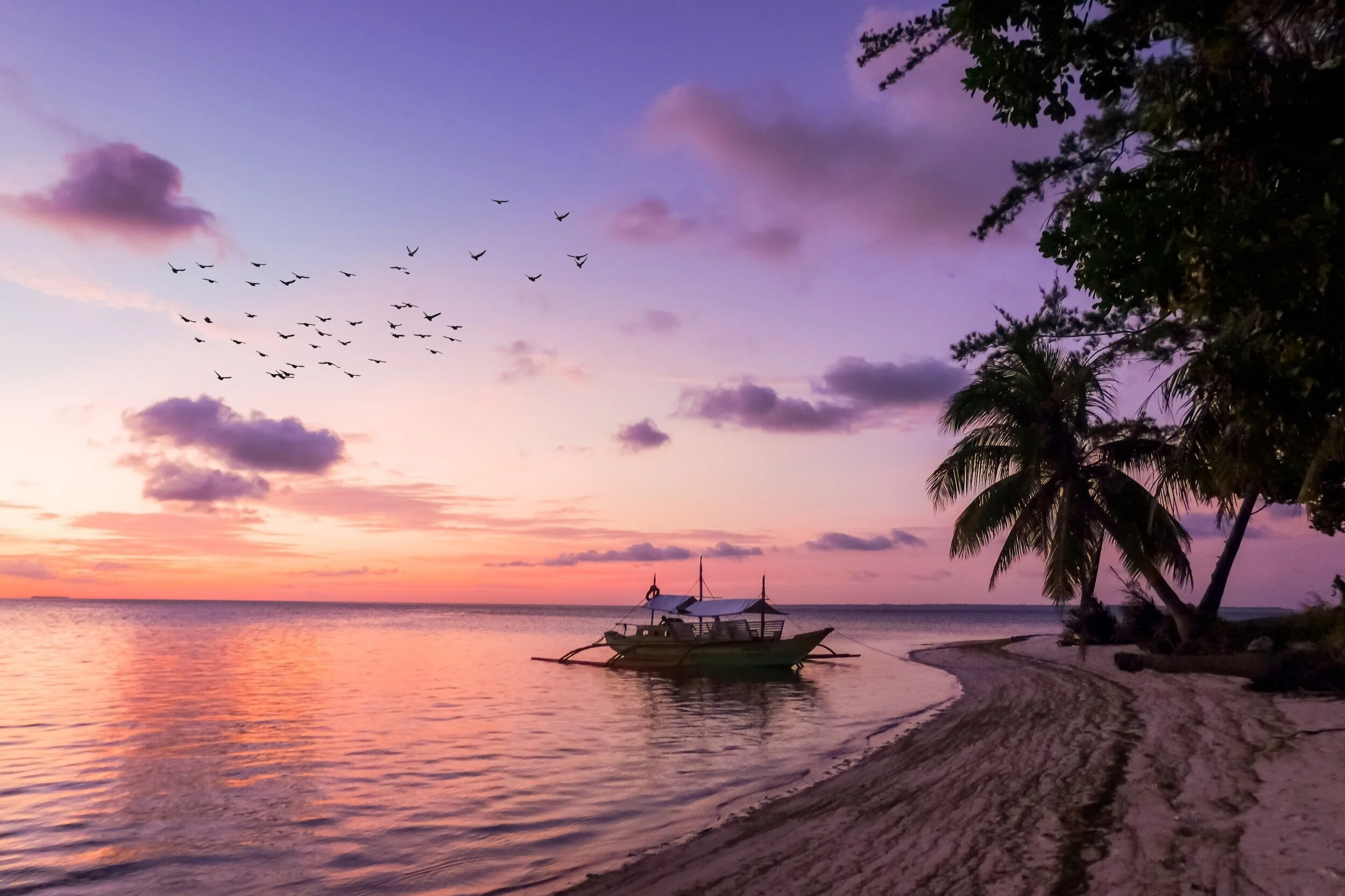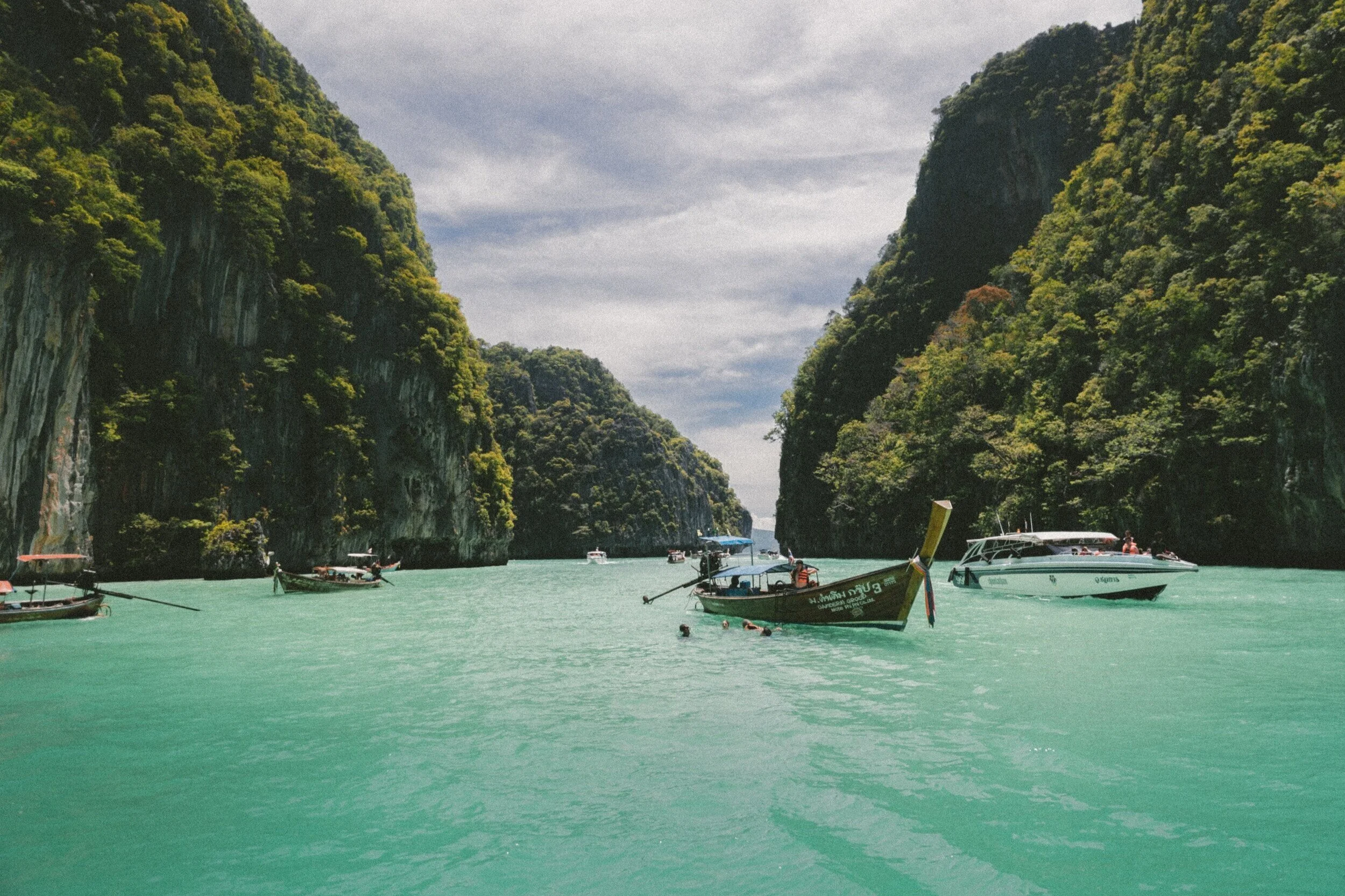Travel South East Asia with Ease: Visa and Visa Extensions Guide
As travellers with New Zealand passports, we’re lucky to be able to travel reasonably freely within South East Asia.
A few things that are always on our minds are visas, visa extensions and the costs of both. It’s also one of the questions we get asked the most.
We had a preconception that extensions were rarely offered and were going to be either expensive or challenging to get. We were very wrong. Here’s our experience of different visas and visa extensions across the region.
Visas for Indonesia
Current rules for most arrivals are that you need a Visa on Arrival (VOA). This costs around 500,000 Indonesian Rupiah (IDR).
You can purchase it on arrival (obviously) or you can get it online (an eVOA) and skip one of the queues if you’re arriving at certain ports.
This is a great idea if you’re arriving somewhere busy like Denpasar, Bali. Less important in Medan, Sumatra.
Also, you currently need to complete a digital customs declaration for Indonesia. You can do this at a kiosk in the airport or on your phone when you arrive.
But save yourself another queue by filling in the simple form here before you fly. I flew from Sydney, via Singapore and they wanted to ensure I had done this before check-in.
The VOA/eVOA will give you 30 days in the country. This can be a little tough if you want a few days getting to somewhere more remote and then want to stay a full month.
Luckily, extensions are relatively straightforward.
Visa Extensions - Online and in Bali
You can easily extend the VOA/eVOA. We did this twice, once in person at an immigration office and once online.
If you want to do it online, you have to have purchased the eVOA. It’s super simple.
The website was down once and we had to head to an Immigration Office in Lovina, Bali. I Whatsapped them to check the hours, but when we arrived the team had already gone home.
The lovely attendant gave us all the forms though so we could fill these out at home and told us when to come back, which was just the following day.
When we came back, we were quickly seen by one of the immigration officers. We had everything we needed except the printout of our eVOA. Make sure you remember yours!
We went across the road to the Indomaret to pay the fees. You just take the receipt back to your officer.
Then we returned several days later to collect our passports, visa extensions included. Super easy, but does take a few days and you need to be near an Immigration Office.
If you have the choice, get an eVOA and do the extension online. That way you can be in the remote jungles or islands that Indonesia is known for.
Visas for Laos
Laos had one the strangest processes for getting a visa as well as extending it.
We crossed into Laos from Thailand at Chiang Khong to Huay Xi. We stayed at the Day Waterfront Hotel in Chiang Khong, which I can’t recommend enough. They had copies of the forms we’d need at immigration the following day and helped organise our transport.
When you arrive in Laos, you’ll need to complete the forms if you haven’t already. Then you hand these, with your passport, over to the immigration officer.
They’ll charge a small extra fee here if you arrive early in the morning, on weekends or public holidays.
Once everyone in the queue had handed over their passports, the blinds came down and they set about processing them all. Then there was a bit of a scramble to hand each passport back to the right person.
You’ll feel like you’re done at this point, but you haven’t paid. Head towards the exit where you’ll line up to pay the fee.
You can pay in USD but they’re fussy about old notes, rips or folds. Several people in our group had to get out more cash as their notes weren’t accepted. There were two ATMs onsite but they wouldn’t take our credit cards, only debit. Be prepared.
We had swapped our remaining Thai Baht over into Laotian Kip at the Thai border and all our notes were accepted.
Visa Extension in Vang Vieng
This was another strange experience.
We’d been given the name of an agent in Vientiene to whom we could send our passports away, but we’d also read that we could do the process at the police station.
This would be cheaper and faster.
Kie did the first visit, to ask if this was legit. They said yes and told us to come back.
We returned and they were a little confused but agreed that they could do it. But not that day. We needed to do the application closer to our visa expiry date.
We returned, again, and this time they seemed to wake up one of the policemen from a nap. Vilaiphone, our new friend, threw on a shirt and took us into an office.
He wrote out a form explaining that he was taking our passports. The first one was for Tania and was written in Lao. She finger-printed it and signed in.
Kie’s was at least in English.
Then Valaiphone informed us that he was also a taxi driver, so he would drive our passports down to Vientiene to be processed by the visa office.
He took the fee of 750,000 Lao Kip each and we crossed our fingers that we’d see our passports again soon.
A few days later, as promised, he called to let us know they were ready. He even offered to drop them back to our hotel as he was out driving his taxi.
Another visa story for the books.
Visas for Malaysia
One of our favourite countries to travel to because of its relaxed approach to tourist visas. We got a 90-day visit pass on arrival. This is available to people from a lot of countries, but there are some exceptions which you can see here.
This pass makes it super easy to travel around the country, stay in multiple locations, visit both peninsular Malaysia and Borneo or get comfortable in one spot. Malaysia has a huge variety of locations you can stay too so you’re guaranteed not to get bored.
Even with this lengthy visa, we accidentally managed to overstay by a day. The passport stamp doesn’t state the date you need to leave and we miscalculated.
We flew from Penang to Kuala Lumpur before transferring to an international flight. It was in KL that they picked up our mistake.
The immigration officer took us to a large room with four female Malaysian immigration officers in it. They questioned us and we explained our honest mistake. They filled in some paperwork which they asked us to sign and then let us continue to our flight.
Not saying you should overstay your visa, but this was our experience and it wasn’t that painful.
One quirk of Malaysia is that to fly to the Borneo states of Sabah and Sarawak requires an almost international level of immigration. We were asked for our passports, they were stamped to say we’d arrived and when we needed to leave the region.
Visa Extension in Malaysia
We never stayed longer than 90 days in Malaysia, so we haven’t experienced extensions. However, we’ve bounced in and out of the country multiple times in the last two years and never had any issues.
Visas for the Philippines
Another country that allows citizens of most countries to enter and stay for 30 days. We had some additional forms to fill out before boarding, but this was COVID-related and is most likely removed now.
Visa Extension in Boracay, Philippines
What is exciting about the Philippines is that they are very happy to extend your visa for you.
We went to the local Immigration Office in Boracay to ask about the process. They instructed us to email to make an appointment.
We asked what forms, documents or photocopies we needed to bring with us. An emphatic, nothing, just the cash for the fee.
At the time, the fee was 3,030 Filipino Pesos per person.
We heard that it was ex-President Dueterte who made this process so simple. He told immigration that they needed to do away with unnecessary paperwork and hold-ups.
And it is one of the most efficient processes we experienced.
Once you’ve made your appointment, you get processed in that one session and walk out with the extension all done. No need to come back to collect your passport.
We also heard that you can continue this 30-day extension process for up to two years without running into too much trouble. We ended up leaving due to the rainy season so didn’t test this out. Let us know in the comments if you have stayed longer than 60 days!
Visas for Thailand
We first flew into Thailand in March 2022, under what was then the Covid-19 era Sandbox program. This was constantly evolving and is no longer currently in effect so we won’t cover this here.
On our second visit to Thailand, we entered under a free Visa on Arrival in January 2023. This was for 45 days at the time, but it has been reduced back down to 30 days. This is free on arrival and you don’t need to organise anything before you get there.
30 days can be a pain if you want to go somewhere that takes a day or two to travel to and still rent somewhere for 30 days to receive a monthly discount.
Sometimes it’s worth booking for an extra couple of days at your accommodation to get the discount and then leave early. Try extending your dates on Agoda or Booking.com to see if you get a lower overall charge.
Visa Extension in Koh Chang, Thailand
Our third time in Thailand, we stayed in Koh Chang. Kie did get a visa extension while based there, so here’s the process for this.
In Koh Chang, the visa office does not offer extension services. You will need to travel to the Trat Immigration Office.
If you have a motorbike, this is a reasonably easy journey to take yourself on. If it’s not raining.
Drive to the ferry, skip the queue of cars to pull up at the front and purchase your ticket at the ferry office. This costs 80 Thai Baht (THB) per person.
The ferries run every hour, but keep in mind the queues can be long for cars. It’s quicker on a bike or foot.
Once back on the mainland, it’s about a 30-minute drive to Trat. You’ll need your passport, a photocopy of the photo page as well as the visa page, a TM30 form (they have these there if you haven’t got one beforehand) and THB1,900 in cash.
They’ll process it on the spot in a couple of hours.
Check they’re open (e.g. no public holidays) before you go as it is a bit of a journey. You don’t want to make it twice if you don’t have to.
Also, pro tip: arrive in the afternoon. There are fewer people requiring help and the staff are keen to get you processed so they can go home.
If this article helps you get a visa or visa extension, please do let us know! Or if you have any other tips and tricks, please send us a DM on Instagram. We’d love to hear your advice.










